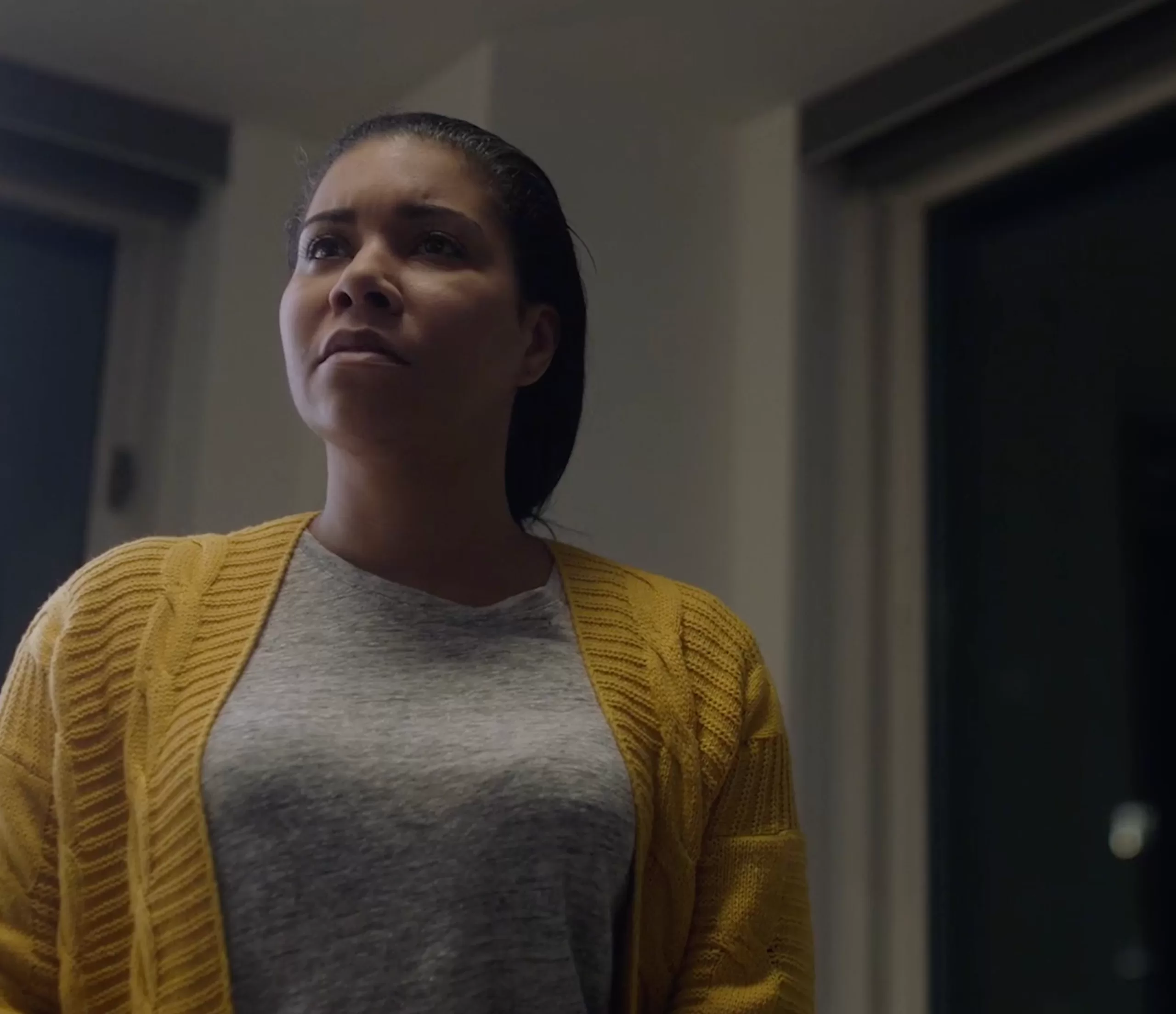Greetings from DOC NYC 2020 ! “The Walrus and the Whistler,” “Collective,” “Belushi” and “A Crime on the Bayou” (and more) top our list
Like nearly all film festivals in 2020, DOC NYC has switched to a virtual paradigm this year, but the quality of nonfiction films coming out of this celebration of the factual is still wondrous. The festival kicks off Wednesday and goes on until the 19th. There are so many great offerings this year, and it’s nearly impossible to catch them all, but here are some quality entrants to keep on your radar.
Hopefully we’ll have more coverage as the festival continues. For in this most surreal year, it’s ever more important to keep our eyes on the facts and the real.
“Crime on the Bayou”
Director: Nancy Buirski
In 1966, the first students of color were integrated in the public school in Louisiana’s Plaquemines Parish. Several were accosted by Whites, a fight broke out, and a young Black man stepped in to break it up. Then nineteen, Gary Duncan is said to have but touched one of the White students’ arms, which set off a series of events that proved just how untenable and evil were segregation, Jim Crow and a nation turning a blind eye to racial injustice.
“A Crime on the Bayou,” from director Nancy Buirski, catches up with Duncan, now in the autumn of his life, recalling how he was arrested for “assault,” rearrested, harassed and then harassed again as the power structure of notorious parish boss Leander Perez came down upon him in such a way as to remind African Americans that they sought equality at their own peril.
What a large deal to make out of so small a gesture, but the case of Duncan provides just one example of how Southern Blacks were harrassed time and time and time again—or worse. Perez even has Duncan’s crusading lawyer from up North, Richard B. Sobol, thrown in jail. But try as Perez and the forces of hate might, the civil rights era had begun, and “A Crime on the Bayou” brings to light one of that time’s little-known chapters. Sobol and other lawyers from the North—nearly all of whom are Jewish, and “Crime” makes the case that with the Holocaust then not even a distant memory, Jewish lawyers made a natural ally in the struggle—push back against the arbitrary persecution of Duncan, getting all the way at the Supreme Court, where the Warren Court ruled that Louisiana subjecting Duncan to a trial without a jury was unconstitutional.
A haunting jazz score, suitable for the setting, mournfully underlines the proceedings, and Buirski closes with images from 2020 of Black Lives Matter protesters harassed and arrested. No matter how far we may have come, so much remains to be done.
[in 2016 Rudy Cecera interviewed Nancy Buirski, see the piece here]
“The Place That Makes Us”
Director: Karla Murthy
Youngstown, Ohio, for anyone familiar with the Springsteen song, “built the tanks and bombs that won this country’s war.” But that was decades ago, and like oh so many steel towns across the so-called Rust Belt, Youngstown has fallen into disrepair, dereliction and depression. The plague of opioids exact their price on those who remain.
And yet, there are some who believe their hometown is not only due but capable of a resurgence. Karla Murthy’s “The Place That Made Us” follows several Youngstowners tirelessly pressing to revivify their Ohio hometown in the wake of industry having long since fled.
At a time when so many are fleeing the big cities amid a global pandemic, it’s the smaller communities that will likely see an uptick in population in the months and years ahead, thus perhaps giving even down-on-its-luck Youngstown an influx of new blood as these hearty entrepreneurs continue to work so hard.
“A Cops and Robbers Story”
Director: Ilinca Calugareanu
Truth continues to be stranger than fiction. As evidence, take the time out for Ilinca Calugareanu’s “A Cops and Robbers Story,” which traces a New York cop named Corey Pegues, a onetime crack dealer who, after a stint in the Army, joined the NYPD and rose through the ranks to become a decorated officer. Much of his street past was unknown for years, but when the truth came out, Pegues faced a backlash not only from his fellow officers but from the public and the streets that helped shape him.
Things only get more complicated in the wake of the choking death of Eric Garner, which leads to a discussion about police brutality, particularly against persons of color. Pegues, before his origins are known, is seen speaking out on this—doubtless bringing to bear his own up-close street knowledge.
While the doc ends somewhat abruptly, its discussion of the relationship between law enforcement and communities of color could not be more relevant to our moment.
“Belushi”
Dir: R.J. Cutler
John Belushi’s star burned fast, bright and went nova in upon itself just as quickly, as the funnyman’s drug appetites finally outdid him in 1982, when he was just thirty-three. Rather than applying the traditional talking-heads approach, director R.J. Cutler utilizes audio tapes that Belushi’s widow, Judy, made in the early-eighties for an oral history of her husband. Thus, rather than modern-day persons looking back at Belushi’s career and influence, we hear contemporaneous accounts from his friends, fellow comedians and loved ones, who suffered in nearby orbit nearly as much as did the tortured comedian.
Those voices include Belushi’s brother Jim, as well as Lorne Michaels, Dan Aykroyd, John Landis, Harold Ramis and Carrie Fisher. Nearly all testimonials stand in awe of Belushi’s talents; nearly all express their fears that the man’s insecurities and addictive personality would do him in, no matter how sincere were his tries at rehab or the interventions of loved ones.
It’s an intriguing and effective approach, sending us back into the Belushi world of his too-brief stardom, but one that, even at its height, was never enough adulation for the man who sought desperately to make the world laugh.
“Colectiv” (Collective)
Director: Alexander Nanau
A 2015 nightclub fire in Romania killed 64 and injured over 100 others, and director Alexander Nanau approaches his documentary about the ensuing investigation and trials like a detective: uncovering clues and listening to frank, and horrifying, testimonials from those who survived. But there’s more to this tragedy than meets the eye, as Nanau’s protagonists pursue a sense of justice for wrongs that reach all the way up to the highest levels of the Romanian government.
One of the film’s most harrowing scenes shows a victim of the fire, missing fingers and severely burned, modeling during a photography session, even a small way of not giving death and destruction the last word.
(article’s featured image is a still from “Colectiv”)
“The Last Out”
Directors: Sami Khan and Michael Gassert
Of all of the detritus of America’s sixty-year-old embargo with Cuba, one that has been largely unseen is a blockade of Cuban players joining the major leagues in the United States. Baseball is as popular on the island nation as it is here, but thanks to those outdated proscriptions, players from Cuba wishing to get to “the Show” in America must take a circuitous route of coming into the United States via Mexico or other places. “The Last Out” follows several Cubans with dreams of playing in the big leagues, but being good at hitting and fielding won’t be enough. Khan and Gassert’s cameras follow several of the young men as they undertake perilous nighttime journeys across Central American borders (one nail-biter shows a coyote trying to fleece them for extra money after they’ve already boarded a boat) trying to get to the United States—and that elusive hope.
“Neither Confirm Nor Deny”
Director: Philip Carter
Watergate was taking up the front page ink in the early-seventies, which may be why a top-secret CIA-sponsored mission to recover a nuclear-armed, sunken Soviet submarine didn’t get much notice—at first, anyway. Using a massive ship-building project with Howard Hughes’s California-based firm as cover, a team of engineers under “the Company” built a massive dredge and crane in plain sight of beachgoers who never knew its true mission.
Philip Carter’s enrapturing documentary revisits with some of the top engineers on “Project Azorian,” now in their golden years (several have passed since being interviewed), who discuss frankly their duty to country and the hush-hush nature of their mission. But as it was the early-’70s, these cloak-and-dagger soldiers being directed from Langley nonetheless got to enjoy, in some manner, the counterculture of the time; we are informed that good-looking secretaries with top-secret clearance were hired to work for their offices next to the Los Angeles airport—and that at least one marriage between engineer and secretary took place.
The minutiae of Project Azorian is fascinating, with footage of the sunken Russian sub interspersed with the talking heads recollecting their belief that the mission’s success was never certain, nor was their safe return to land (a touching episode sees the salvage ship’s crew members respectfully giving several of the deceased sub’s crew a traditional funeral at sea.) Meanwhile, curious Soviet vessels poke around, and Carter never fails to remind us that Watergate was heating up back in D.C., and that Nixon and Ford and Kissinger had to tread carefully with Moscow’s emissaries.
And when the secret mission to recover the sub eventually hit the front pages—largely due to the work of crusading New York Times reporter Seymour Hersch, who is thankfully interviewed here—a larger discussion is forced about the CIA’s unshackled excesses around the world. With their dirty tricks forced into the light, changes were necessary, particularly in the wake of Watergate. For as Hersch and several others remind us, freedom of the press is a power specifically enshrined in the Bill of Rights.
A fascinating look at a little-known, now-declassified chapter of the Watergate era, “Neither Confirm Nor Deny” takes great care in appreciating the often-unsung work undertaken by our spies, and walks a fine line between criticizing a once-unaccountable CIA and celebrating the hard work of those working on the critical mission of national security.
“The Mystery of D.B. Cooper”
Director: John Dower
One of the great mysteries of the last fifty years is what became of D.B. Cooper, the notorious skyjacker who parachuted out of a jet somewhere over southern Oregon with $200,000 in ransom money and was never seen again. The documentarian John Dower opens the curtain by sitting down with crew members of that hijacked jet as well as the now-retired FBI agents. But what makes Cooper’s story so, well, “mysterious,” are the plethora of theories about his eventual whereabouts. This is where Dower’s film comes truly alive as he traces not less than four “suspects,” all of whom claimed to be the hijacker, but were they all lying? Their families and friends don’t think so, but logically, they couldn’t all have been the same man.
In fact, among the documentary’s greatest moments is Dower asking each of the suspects’ acquaintances if they believe the person they knew was in fact the real Cooper. To a person, they all answer yes.
It’s a mystery we’ll likely never see the end of, especially considering the FBI has officially closed the case, but doubtless the theories about the “real” Cooper’s whereabouts—living or otherwise—will continue to thrive so long as does his legend.
Comes to HBO on November 25th.
“The Walrus and the Whistleblower”
Director: Nathalie Bibeau
Phil Demers was one of Marineland’s top aquatic animal trainers, but the more he saw, the less he liked what was happening at the Canadian amusement park. Demers blew the whistle on the park’s cruelty to its animal stars, but what he couldn’t have foreseen was that the business and its quixotic owner, John Holer, a Slovenian entrepreneur who brought his love of circus animals to the New World, would spend the better part of a decade fighting him in court.
Director Nathalie Bibeau first shows us Demers training several animals, including a particularly loving walrus named Smooshi, who in the process of “imprinting” takes Demers as her mother. When Demers leaves his job, he naturally hopes to take Smooshi with him, or at least find her a better home. Thus an epic war of words, in courts, on Twitter and shouted from outside the park’s entrance, begins as Demers and his allies aim to save Smooshi in a David versus Goliath quest for justice.
Demers’s legal bills run into the six figures, doubtless as his adversaries bank on him going broke and giving up. We sense the tension at Demers’s home, which he shares with a fellow former Marineland trainer, whose pained glances at her partner barely hide the knowledge that this fight may be unwinnable.
But there is at least some win, such as it is, as Severs et al. continue to push Parliament in Ottawa to pass legislation banning cetacean performances … but not walruses? One thing at a time, he seems to say.
One of the doc’s most heartrending scenes shows Severs lost in tears, but for a reason that is entirely unexpected—and that likely gives away much more of his psychological state than he might dared to have shared otherwise. I shall not reveal the particulars but to say that Ahab, without Moby Dick, perhaps had no purpose.
A fascinating examination of a man out to catch his white whale—but who in this case is a loving walrus Severs would very much like to see again not just alive but fully cared for.
“Blue Code of Silence”
Director: Magnus Skatvold
Robert Leuci broke the code of silence that’s prevalent among police officers and this fascinating documentary from filmmaker Magnus Skatvold takes us back to a time in New York when cops and gangsters were too often one and the same, and those who dared expose their malfeasance faced, at best, being shunned. But Leuci was no Serpico, as from all evidence he too took money and plied sources with drugs, and only turned when his neck was in the vice. Many of his fellow retired officers refer to him as the most hated man in the city, and that’s long before Rudy Giuliani.
Speaking of whom, the former mayor and Trump apologist shows up here in his younger days with a full head of hair, prosecuting police corruption with a force of will that would propel him eventually into Gracie Mansion and then, well, ya know.
But Leuci is thankfully the focus, and Skatvold gets him to sit for on-camera interviews, some of which are unapologetic, but all of which are surprising. Leuci’s testimony here will do little to change any minds already made up, but “Blue Code of Silence,” as its name implies, is far less interested in exonerating or condemning one former cop than it is with examining the rot of a city that could lead its servants, chosen to protect and serve, rather to line their own pockets and, more often than not, become that which they most despised.
news via inbox
Nulla turp dis cursus. Integer liberos euismod pretium faucibua






